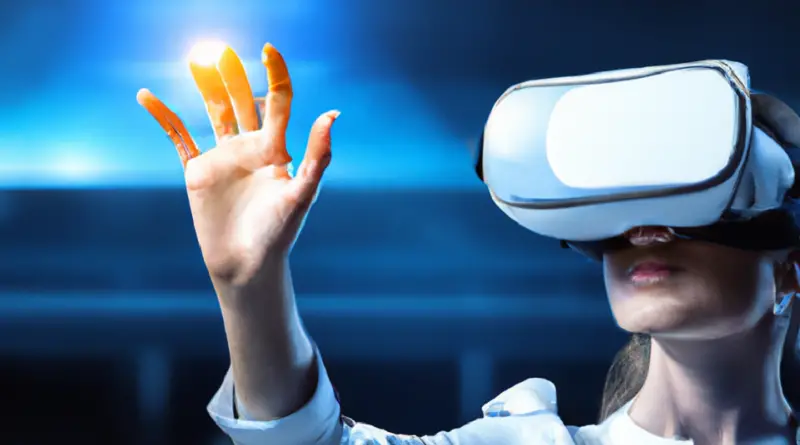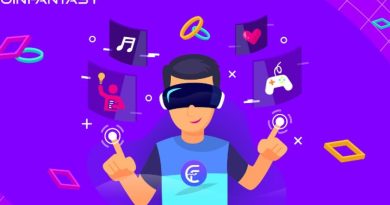The Metaverse’s Role in Education: How Virtual Reality Is Being Used to Improve Learning and Teaching in Schools and Universities
The Metaverse, a virtual reality space, has the potential to revolutionize education by providing immersive and interactive learning experiences, allowing for remote collaboration and communication, and increasing access to educational resources.
Overview of how virtual reality is being used in education
Virtual reality (VR) technology is being used in education to create immersive learning experiences for students. By using VR headsets, students can explore virtual worlds, participate in simulations, and take virtual field trips that enhance their understanding of course materials and make the learning process more engaging and interactive. VR is also being used to support special education and to provide virtual access to resources and experiences that may be otherwise unavailable. The technology is being used in K-12 and Higher Education and has the potential to revolutionize the way education is delivered in the future.
Advantages of using virtual reality in education
The advantages of using virtual reality in education include:
- Immersive learning experiences: VR provides a unique way for students to experience and interact with course materials in a way that is not possible with traditional methods.
- Increased engagement and motivation: VR can make learning more interactive and engaging, leading to increased student motivation and participation.
- Improved retention of information: VR experiences can help students to better understand and remember what they have learned.
- Access to virtual field trips and simulations: VR technology can provide students with access to virtual experiences and simulations that would be difficult or impossible to replicate in the physical world.
- Special education: VR can be used to support special education by providing virtual access to resources and experiences that may be otherwise unavailable.
Examples of virtual reality in education
Some examples of virtual reality in education include:
- Virtual reality in K-12 classrooms: VR technology is being used in K-12 classrooms to enhance students’ understanding of subjects such as science, history, and geography.
- Virtual reality in higher education: VR is being used in higher education to provide students with access to immersive simulations and virtual field trips, which can help them to better understand complex concepts and real-world applications.
- Virtual reality in special education: VR technology can be used in special education to provide students with access to resources and experiences that may be otherwise unavailable, such as virtual field trips, simulations, and social interactions.
- Virtual reality in language learning: VR technology can be used in language learning to create immersive environments where students can practice speaking and listening in a foreign language.
- Virtual reality in medical education: VR technology is being used in medical education to provide students with hands-on experience in surgical procedures and to simulate medical scenarios that are difficult to replicate in real-life.
Challenges and considerations
There are several challenges and considerations when it comes to using virtual reality in education, including:
- Access to technology and equipment: Not all schools and educational institutions have access to the necessary technology and equipment, such as VR headsets, to implement VR in the classroom.
- Training and support for teachers: Teachers may require training and support to effectively use VR technology in their classroom and to integrate it into their curriculum.
- Ensuring accessibility for all students: It is important to ensure that all students have equal access to VR experiences, including those with disabilities or limited access to technology.
- Privacy and security concerns: The use of VR technology in education raises concerns about privacy and security, such as the potential for data breaches or misuse of personal information.
- Cost: Implementing VR technology in education can be expensive, and schools and educational institutions may need to consider the cost of purchasing and maintaining the necessary equipment.
- Safety: The use of VR technology can be intense and can cause some physical discomfort like dizziness, eye strain, and headaches, so the safety guidelines and precautions need to be considered before implementing it in education.
Future outlook
The future outlook for virtual reality in education is promising, as advancements in VR technology continue to improve and make it more accessible. Some key trends and potential developments in this area include:
- Advancements in VR technology: As VR technology continues to improve, it will become more realistic, interactive and accessible, providing more opportunities for immersive learning experiences.
- Widespread adoption in education: As the benefits of VR become more widely recognized, it is expected that more schools and educational institutions will adopt the technology in their classrooms.
- Impact on the future of education: VR technology has the potential to revolutionize the way education is delivered and to create new opportunities for learning and engagement.
- Increased use of VR in online learning: As the world becomes more digital, the use of VR in online learning is expected to increase, allowing students to experience a more immersive and interactive virtual classrooms.
- Development of specialized VR content: The demand for VR content that is specifically designed for educational purposes will increase, with more companies and educational institutions developing VR content that aligns with the curriculum.




